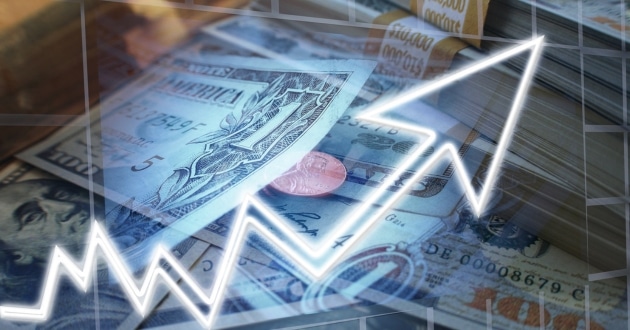High yield savings and investments are becoming a more lucrative option in a financial landscape where interest rates on traditional savings accounts remain low. These financial vehicles offer higher returns on your money, making them attractive for both short-term savers and long-term investors. This article will delve into the best strategies and options for maximizing your returns through high yield savings and investment opportunities.
Understanding High Yield Savings

What are High Yield Savings Accounts?
High yield savings accounts are similar to traditional savings accounts but offer significantly higher interest rates. Typically housed in online banks, which save on brick-and-mortar costs, these accounts can provide a safe, accessible place for your emergency funds or short-term savings.
Benefits of High Yield Savings
- Increased Returns: Compared to standard savings accounts, high yield options can offer 5 to 25 times higher interest rates.
- Liquidity and Safety: Funds remain accessible and are insured up to certain limits by institutions like the FDIC in the United States.
Exploring High Yield Investment Options
Types of High Yield Investments
When it comes to investments, “high yield” typically refers to the potential for greater returns, often accompanied by higher risks. Some popular high yield investment vehicles include:
- High Yield Bonds: Often referred to as junk bonds, they offer higher interest rates due to the higher risk of default.
- Dividend Stocks: Certain stocks provide high dividend yields and potential capital appreciation.
- Real Estate Investment Trusts (REITs): These can offer substantial yields through rental income and property appreciation.
Assessing Risks and Returns
While high yield investments can be lucrative, they also come with increased risks. It’s essential to:
- Understand Volatility: High yield options are often more volatile.
- Assess Default Risks: Especially with high yield bonds, there’s a higher risk of issuers defaulting.
- Consider Liquidity: Some high yield investments may be harder to sell quickly.
Strategic Approaches to High Yield Savings and Investments
1. Diversification
To mitigate risks associated with high yield investments, diversification across different asset classes and sectors is crucial. This approach helps spread potential risks, ensuring that the overall health of your portfolio isn’t tied to a single investment’s performance.
2. Regular Reviews and Rebalancing
Consistently reviewing and rebalancing your portfolio can protect against market volatility and align your investments with your evolving financial goals. This is particularly important in a high yield investment strategy, where market conditions can change rapidly.
3.Tax Considerations
Understanding the tax implications of high yield investments is vital. For example, the interest from high yield bonds is typically taxed as ordinary income, which could push you into a higher tax bracket. Efficient tax planning can help maximize your returns.
Exploring Peer-to-Peer Lending Platforms
Alternative High Yield Options
Peer-to-peer (P2P) lending platforms connect borrowers directly with investors, bypassing traditional financial institutions. Investors can potentially earn higher returns compared to conventional savings vehicles by lending to individuals or small businesses in need of funds.
Utilizing Money Market Funds
Balancing Risk and Return
Money market funds are a type of mutual fund designed to offer high liquidity and safety, with a higher yield than traditional savings accounts. These funds invest in short-term, high-quality debt securities, making them a relatively safe investment with a potential for modest returns.
Investing in Certificates of Deposit
Fixed Income with Higher Yields
Certificates of Deposit (CDs) offer a predetermined interest rate over a specified term. High-yield CDs provide higher interest rates in exchange for longer lock-in periods, making them suitable for investors who do not require immediate access to their funds.
Leveraging Exchange-Traded Funds (ETFs) for Dividends
Diversified High Yield Investments
Dividend ETFs focus on companies that have a consistent record of paying high dividends. These ETFs provide a diversified portfolio of dividend stocks, potentially offering a steady income stream and higher yields than average stock investments.
Elevate Your Investment Strategy with Stash
Begin your investment journey or enhance your current strategies with Stash, a user-friendly platform ideal for beginners and seasoned investors alike. Stash simplifies the investment process by offering a variety of ETFs and individual stocks that cater to a wide range of financial goals and risk tolerances.
Whether you’re interested in exploring diversified portfolios or specific high-yield investments, Stash provides the tools and insights you need to make informed decisions. The platform’s educational resources help demystify the stock market, making investing accessible to everyone.
Exploring Commodities as High Yield Investments
Potential for Substantial Returns
Commodities such as gold, oil, and agricultural products can serve as high yield investments, especially during periods of economic volatility or inflation. Investing in commodities can be done directly, through futures contracts, or indirectly via commodity-focused ETFs and mutual funds.
Each of these topics provides further exploration into high yield savings and investments, offering additional avenues for investors to consider for enhancing their portfolios. By understanding and utilizing these diverse options, investors can strategically increase their potential returns while managing risk.
Enhance Your Financial Future with Long Term Investment Strategies
For investors aiming to build wealth over time, understanding and implementing long term investment strategies is crucial. This approach focuses on financial goals that span several years or decades, requiring patience and a well-thought-out plan. Long-term strategies often involve diversification across various asset classes, regular portfolio rebalancing, and a focus on steady growth rather than short-term fluctuations.
By leveraging tools and insights from Blue Dollar Forge, you can gain the knowledge needed to make informed decisions that align with your long-term financial objectives. Explore comprehensive resources and expert advice to effectively navigate your investment journey.
FAQs
1. What are high yield savings accounts?
High yield savings accounts are savings accounts that offer significantly higher interest rates compared to traditional savings accounts. They are typically available through online banks, which can offer higher rates due to lower overhead costs.
2. How safe are high yield savings accounts?
High yield savings accounts are generally safe as they are often insured by a national deposit insurance corporation up to a certain amount, such as the FDIC in the United States, which insures up to $250,000 per depositor per institution.
3. What are the risks associated with high yield investments?
High yield investments often come with higher risks, including market volatility and the potential for loss of principal. These investments, like high yield bonds or dividend stocks, often offer higher returns due to these increased risks.
4. Can I lose money in a high yield savings account?
The principal in high yield savings accounts is typically safe and not subject to market fluctuations; however, the interest rate can change depending on the economic environment. There is very little risk of losing the deposited money as long as it is within the insured limits.
Conclusion
High yield savings and investments can significantly enhance your portfolio’s growth potential. By choosing the right accounts and diversification strategies, and staying informed about market trends and tax implications, you can effectively increase your financial returns while managing associated risks. Whether you’re saving for a specific goal or looking to grow your wealth, high yield options can offer valuable opportunities to boost your financial outcomes.


